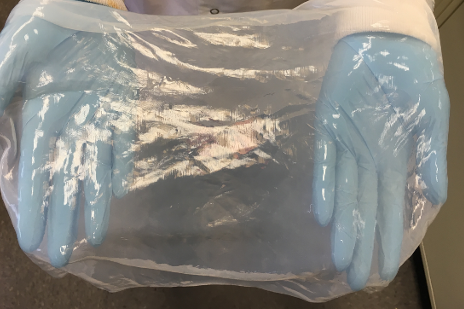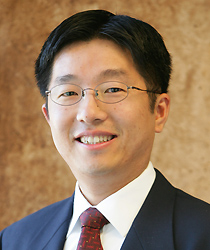News Story
Li Wins NSF Grant to Study High-Performance Cellulose Materials
 With its extraordinary mechanical properties, cellulose can be used to make stronger-than-steel materials. But extracting it from plants can be difficult and costly.
With its extraordinary mechanical properties, cellulose can be used to make stronger-than-steel materials. But extracting it from plants can be difficult and costly.
Researchers at the University of Maryland (UMD) are exploring a promising new alternative, one that takes advantage of a fermentation process that has long been used to produce a traditional South Asian dessert, known as nata de coco. Cellulose produced through such fermentation can also be used to create tough, durable materials that can be used for many purposes.
“Cellulose can be synthesized by certain kinds of bacteria,” said Teng Li, principal investigator (PI) on the project. “They eat sugar and then produce long strands of pure cellulose, which we can use to produce material with a strength of 1 gigapascal (GPa)—stronger than many types of steel. Not only is it strong, but is extremely light.”
As a result, its specific strength—a performance indicator obtained by dividing strength by density—surpasses that of nearly any metal or alloy, including titanium alloy, Li said. Bacteria-synthesized cellulose, moreover, can be obtained at a fraction of the cost associated with extracting cellulose from plants or wood, where it is intermixed at the molecular level with other substances.
I n May, the National Science Foundation (NSF) awarded a $450,000 grant to support the research being conducted by Li, who is a Keystone professor of mechanical engineering at UMD, and co-PI Liangbing Hu from the Materials Science Engineering (MSE).
n May, the National Science Foundation (NSF) awarded a $450,000 grant to support the research being conducted by Li, who is a Keystone professor of mechanical engineering at UMD, and co-PI Liangbing Hu from the Materials Science Engineering (MSE).
Having such materials available could be a boon for everything from airplane and car manufacturing to infrastructure engineering, Li said.
“In aerospace applications, any additional gram of weight can make a significant difference. In cars, the mileage and fuel efficiency depend on how heavy the car is. If you want high performance from the car, and you also want safety and fuel efficiency, then the lighter you can make it, the better. With electric cars, a lighter car will go farther before needing to be recharged.”
Building construction, too, could benefit from use of cellulose because it is lighter and more durable, Li said. In everyday life, it could be used to replace many plastics—and thus help alleviate the environmental cost of non-biodegradable materials.
During the three-year project, Li and Hu will develop methods for fabricating structural materials from the bacteria-produced cellulose, and will also further study the properties of bioderived cellulose.
“We seek to further develop our understanding of the underlying science, which in turn will help us develop potential applications,” he said.
Published June 17, 2020









